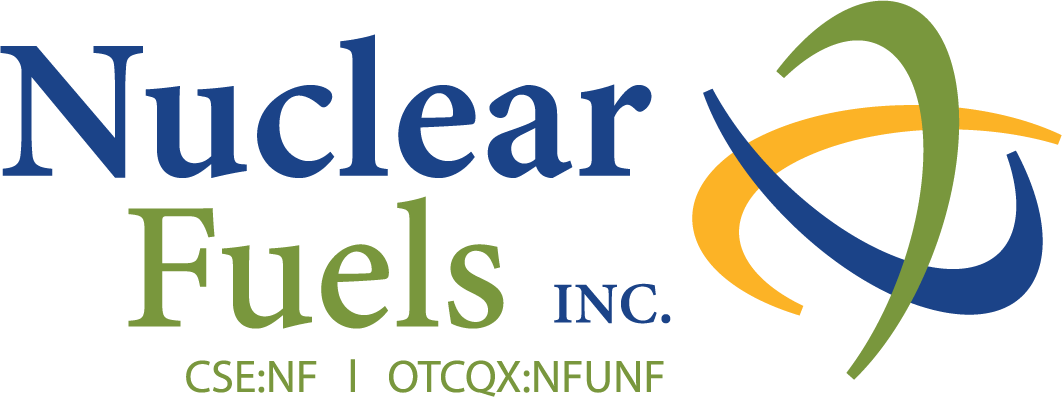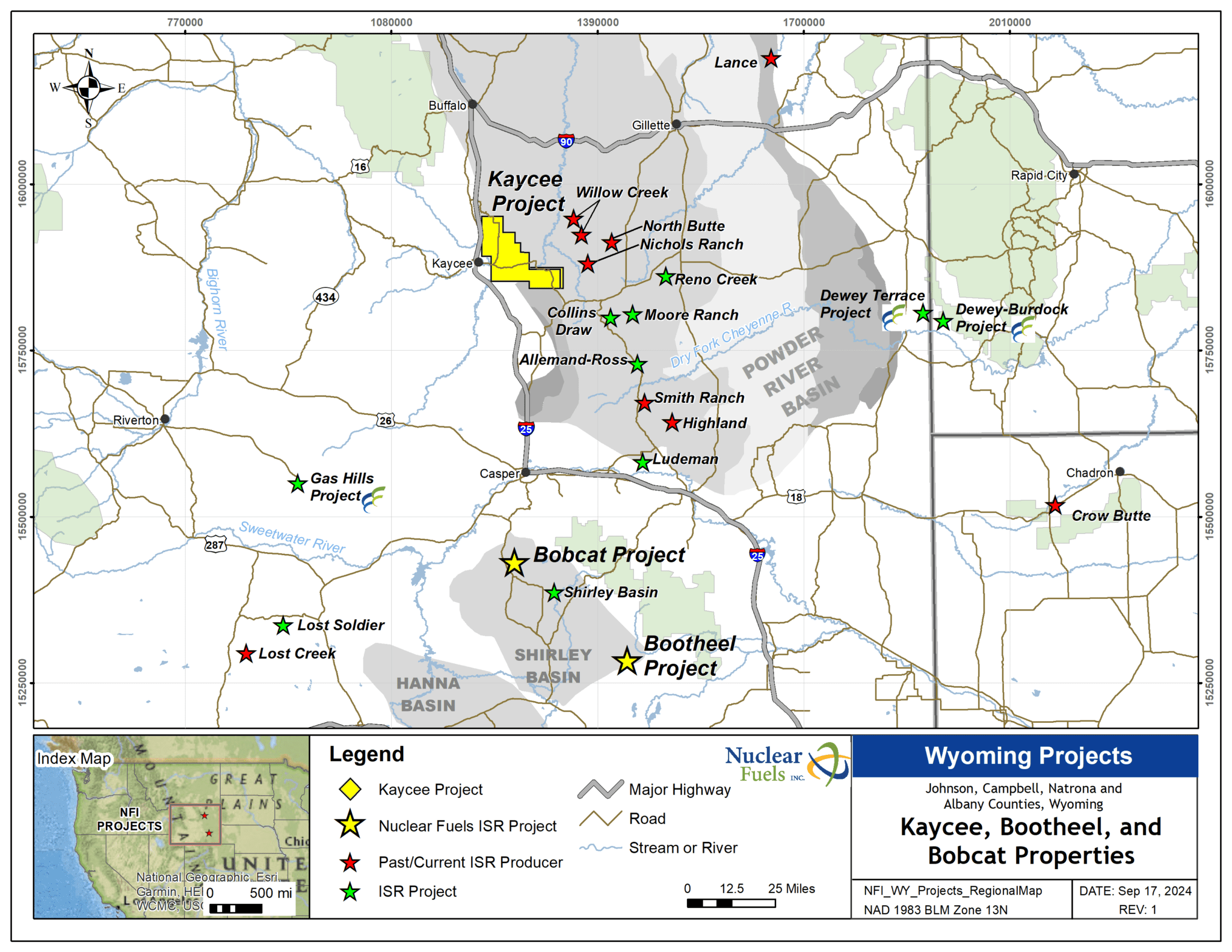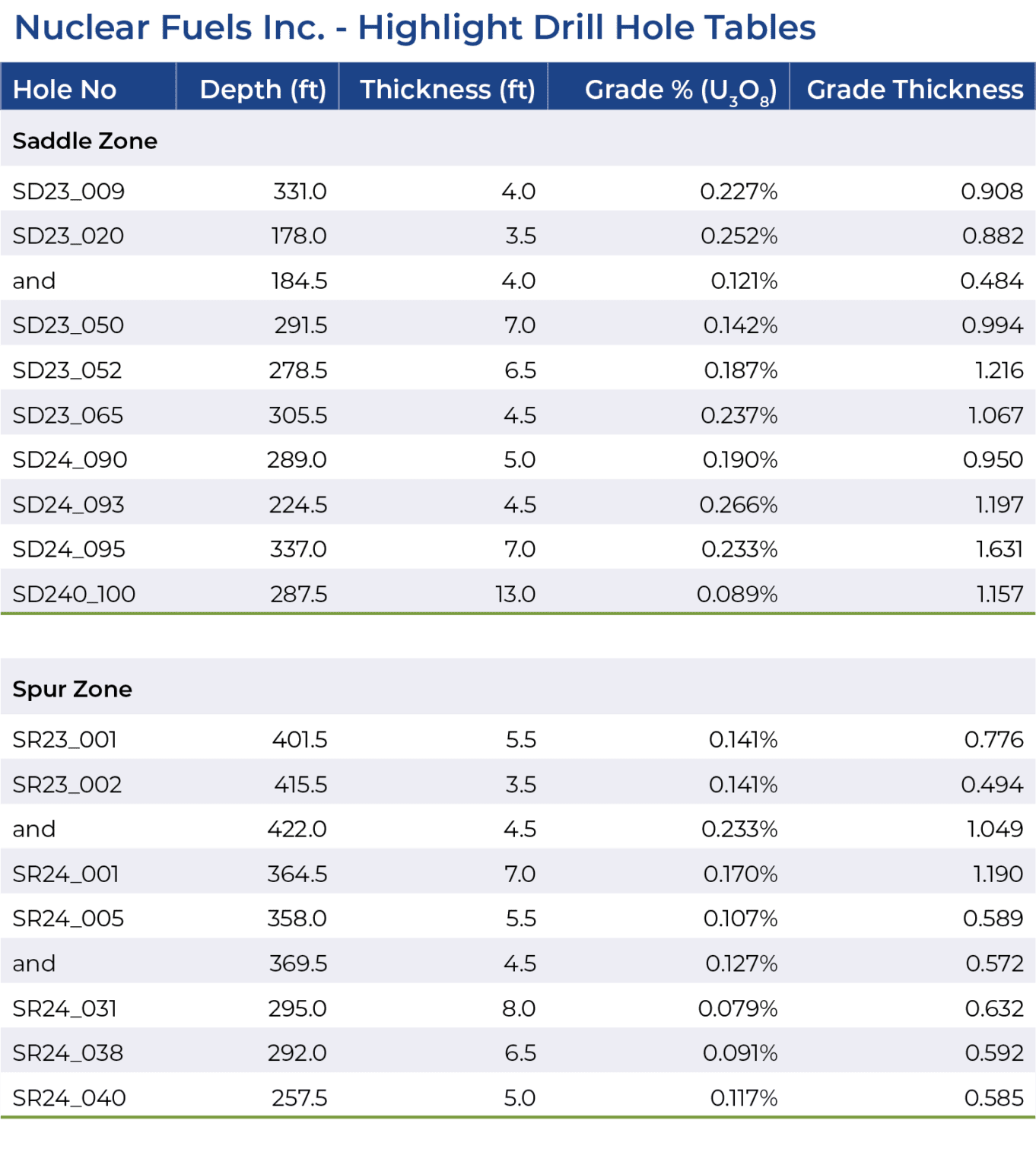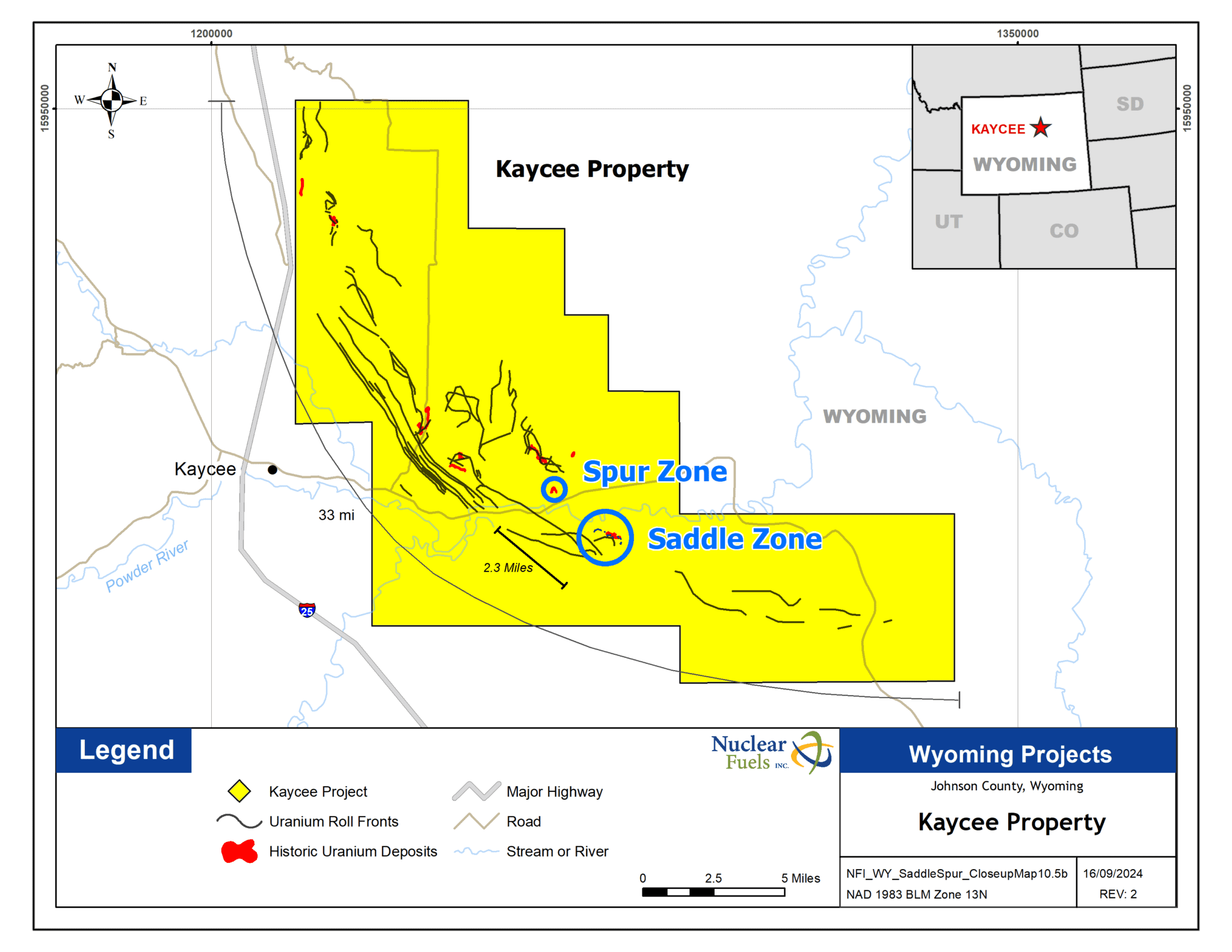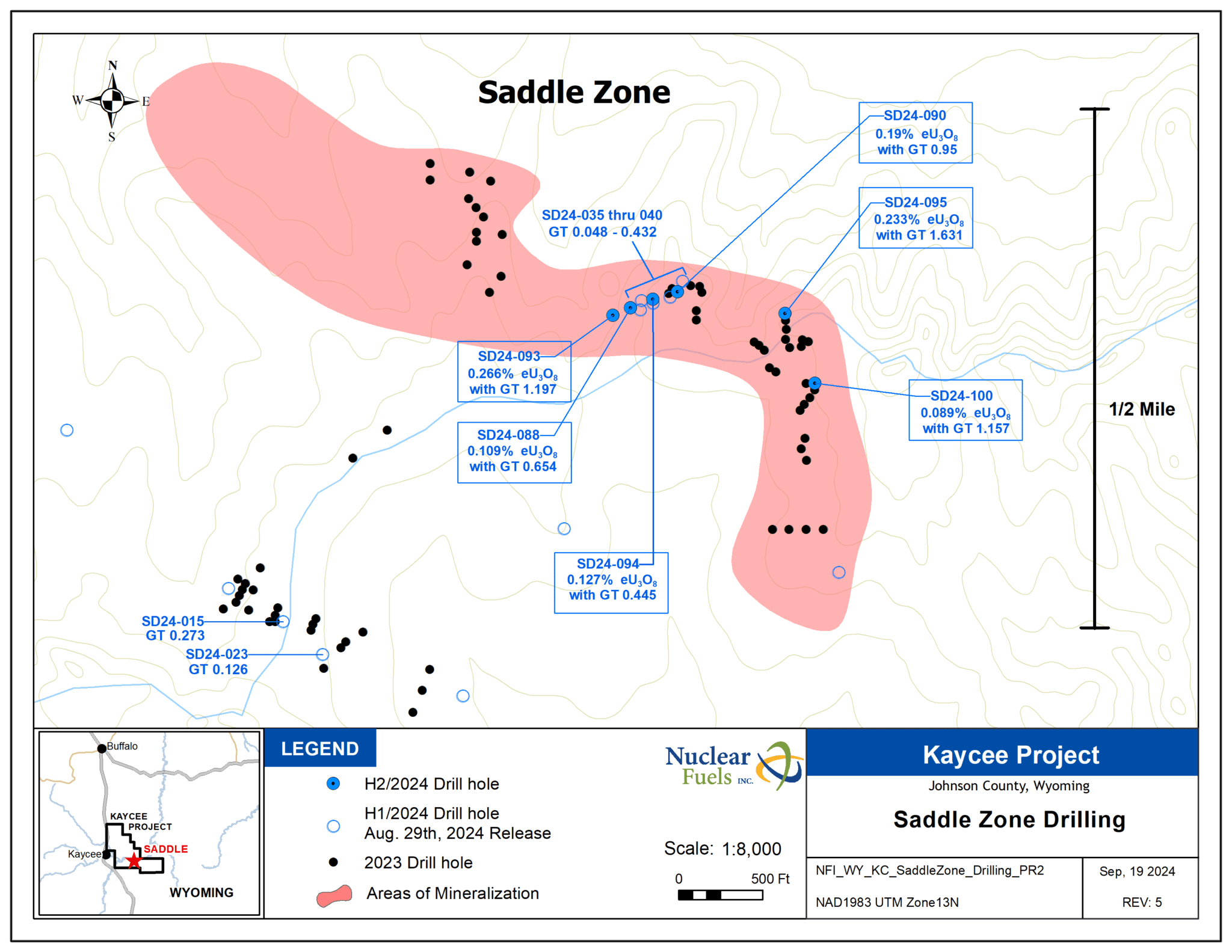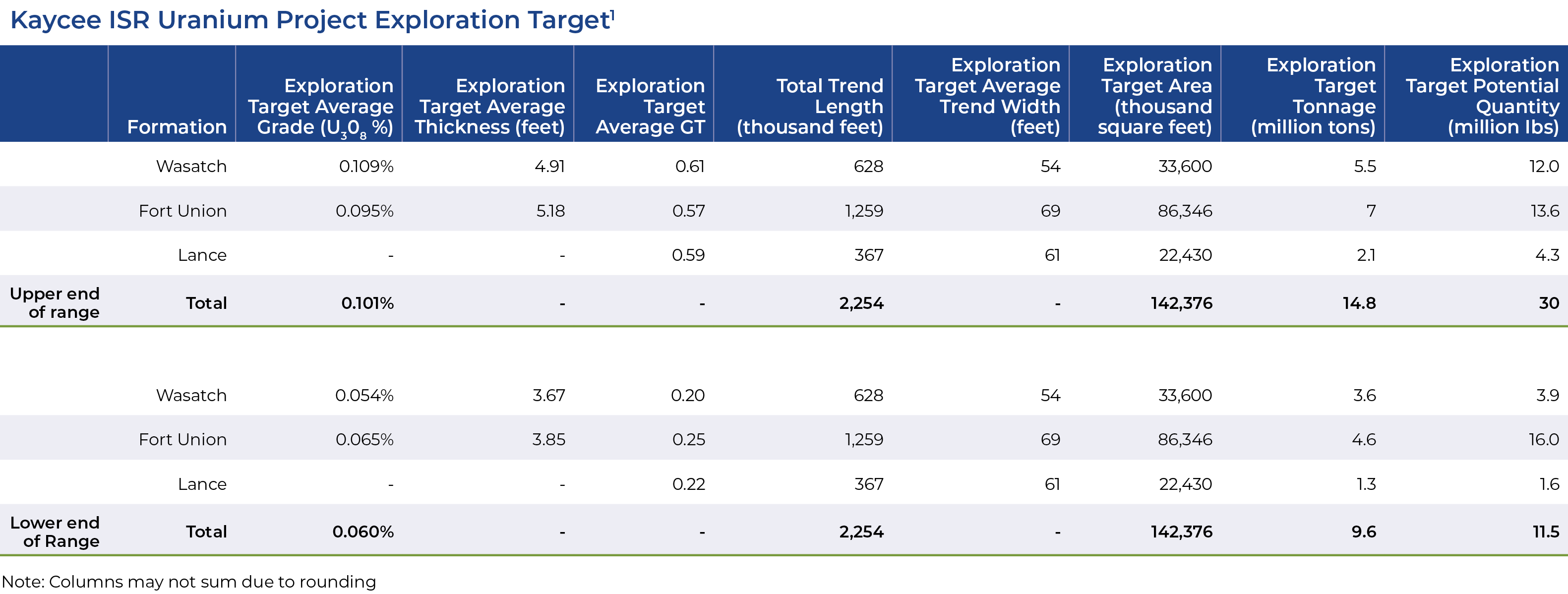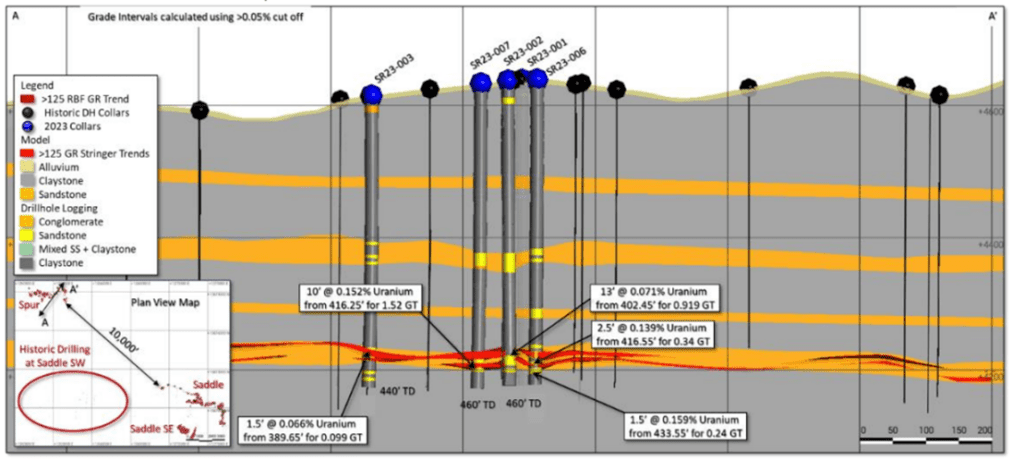Kaycee Uranium Project, Wyoming
Highlights

The Kaycee Project in Wyoming’s Powder River Basin (PRB) is the Company’s priority project, covering a 35 mile mineralized trend with over 430 miles of identified roll fronts and consists of more than 55 square miles of mineral rights. Under Nuclear Fuels Inc., this represents the first time since the early 1980’s that the entire district is controlled by one company.
Project Details
Historic drilling of over 3,800 drill holes has confirmed uranium mineralization over more than 1,000 vertical feet in all three historically productive sandstones within the PRB, making the Kaycee Project unique as the only one in the PRB where all three formations—Wasatch, Fort Union, and Lance—are mineralized and potentially amenable to ISR extraction. The majority of the trend has not been well-explored with drilling concentrated on approximately 10% of the trend.
Nuclear Fuels acquired the Kaycee Project from enCore Energy Corp., which retains a back-in right for 51% of the project by paying 2.5X the exploration costs and carrying the Kaycee project to production (costs recoverable from production) upon Nuclear Fuels establishing a minimum of a 43-101 compliant resource of 15 million pound U3O8
Kaycee Project Drilling Results
Nuclear Fuels commenced drilling at the Kaycee Project in November 2023 with a focus on confirming and expanding historic resources at both the Saddle Zone and Spur Zone which have not been drill-tested since the early 1980s – completed 200 holes in 2023 and during the first half of 2024. Results from the 2023 and early 2024 drilling successfully confirmed and expanded historically-identified mineralization at both the Saddle Zone and the Spur Zone, with numerous holes returning potentially economic grades at relatively shallow, potentially ISR-amenable depths. High-grade mineralization was encountered in numerous drill holes at the Saddle Zone, including hole SD23_065 which returned 4.5 feet of 0.237% U3O8 from a depth of 306.0 feet for a Grade-Thickness of 1.067.
The current drill program underway will expand on these findings.
Saddle Zone Drill Results
- High-grade mineralization was encountered in numerous holes at Saddle, an area of approximately 1,000 acres;
- 38 reported holes have a Grade Thickness (GT) of greater than 0.25, which is considered suitable for inclusion in a typical wellfield in the Powder River Basin;
- Hole SD24-095, drilled to test the northern extension of north-south-trending mineralization which defines the eastern side of the Saddle Zone, returned 0.233% eU3O8 over 7.0 feet (GT of 1.631), representing the best hole drilled by Nuclear Fuels to date;
- To the end of July, the average depth of hole drilled at Saddle is 518 feet;
- Deeper drilling through the Saddle Zone, and to the southwest of the Saddle Zone, intercepted anomalous mineralization in deeper formations than had been previously identified;
- Current drilling program in progress to expand on these findings; Additional drilling will test for further extensions of the main trend and follow up on the newly identified anomalous mineralization encountered within deeper formations.
Spur Zone Drill Results
- To the end of July, 61 holes have been drilled at the Spur Zone, with an average depth of 432 feet;
- Spur Zone drilling has extended the previously identified mineralization to the south, demonstrating the potential to significantly expand the size of historic zones of mineralization:
- Hole SR23-024 (0.109% eU3O8 over 4.0 feet for a GT of 0.436) identified a new extension to the mineralization trending south toward the Saddle Zone, located approximately 2 miles away;
- Holes SR24-031 (GT of 0.632) and SR24-040 (GT of 0.585) extended this trend by over 1,000 feet, which remains open along trend to the south.
- Extension of the Spur Zone by +1,000 feet trending towards the Saddle Zone mineralization, located approximately two miles to the southeast, provides further evidence of a potential connection between these two mineralized zones;
- Continued testing of this concept is a top priority for the ongoing drilling program.
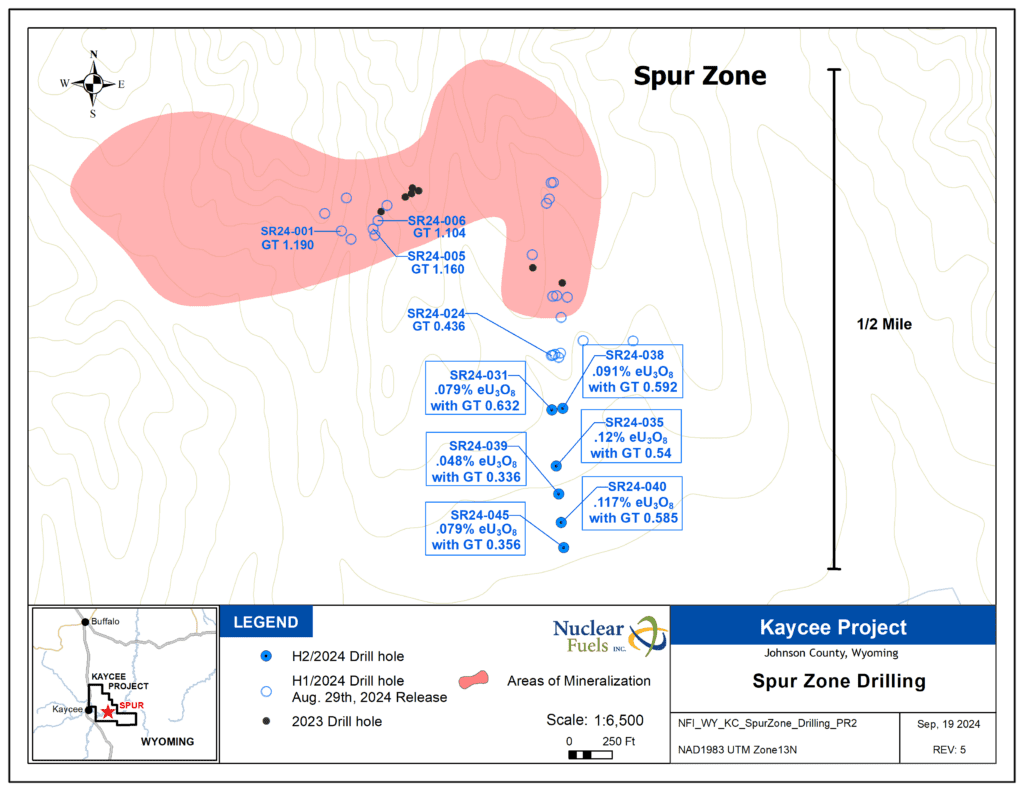
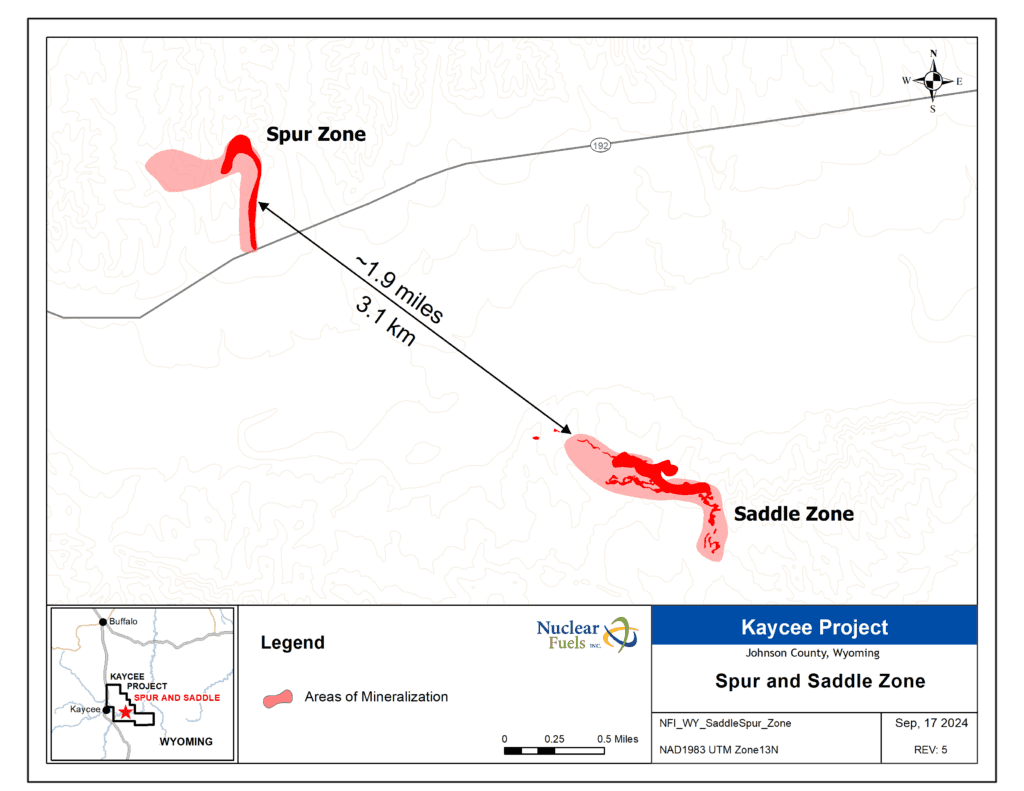
NI 43-101 Technical Report
The Technical Report, prepared by WWC Engineering, has identified an exploration target of 11.5 to 30 million pounds of uranium (“U3O8”) supported by available historical data from previous operators and recent exploration recently conducted by Nuclear Fuels.
Highlights of the Technical Report:
- An exploration target of 11.5 to 30 million pounds uranium (“U3O8″) at average grades of 0.06% to 0.10%;
- A more extensive, in-depth review of historical data identified approximately 430 miles of roll fronts, an increase from the +110 miles previously outlined. Approximately 10% of the mapped redox trends have been explored with close-spaced drilling;
- The identification of the presence of multiple stacked roll fronts in each of the three stratigraphic formations that are known to host uranium mineralization;
- Indication the uranium mineralization lying under the water table may be amenable to In-Situ Recovery (“ISR”), based on historical metallurgical and mineral processing test work. ISR is an economical and environmentally responsible means of extracting uranium through wellfield technology and the use of oxygenated water, eliminating the use of conventional mining techniques;
- Details regarding the eleven (11) reported areas of historical uranium resources occurring at depths that range from less than 50 to 1,300 feet with a shallow water table typically lying between 50 and 250 feet.
- The Technical Report recommended that the Company should continue the current drilling program to delineate mineralization and explore for additional mineralized areas on the Project. In addition, the Technical Report recommended that the Company should prepare a classified mineral resource estimate for the Project, contingent on positive results of the drilling program.
Wyoming
Wyoming is a proven and prolific uranium producer with a pro-energy government with established regulatory regime for the extraction of uranium through in-situ recovery (ISR) technology. As Wyoming is one of the few “Agreement States” where the federal government and the Nuclear Regulatory Commission have ceded regulatory authority to the state government, permitting and advancing uranium projects is more efficient and streamlined as compared to most other states. Wyoming, with over 250 million pounds of historic production, ranks as the state with the second most uranium production to date; most of which has been through the ISR method since 1990 with most of the ISR production having come from the PRB.
Fruchey, R., A., 1982, Kaycee Geologic Report for Washtenaw Energy Corporation and Midwest Energy Resources Co. Internal report.
The technical content of this news release has been reviewed and approved by Mark Travis, CPG., a contractor to the Company, and a Qualified Person as defined in National Instrument 43-101.
Drill holes are completed by Single Water Services using a rotary drill rig. Chip samples are collected for lithological logging every five feet. Century Geophysics of Tusla Oklahoma is contracted to conduct downhole gamma ray, resistivity, spontaneous potential, and deviation. Century Geophysics calibrates it’s downhole tools in the US Department of Energy uranium logging Test pits in Casper Wyoming to insure the accuracy of the down hole gamma ray log measurements.
